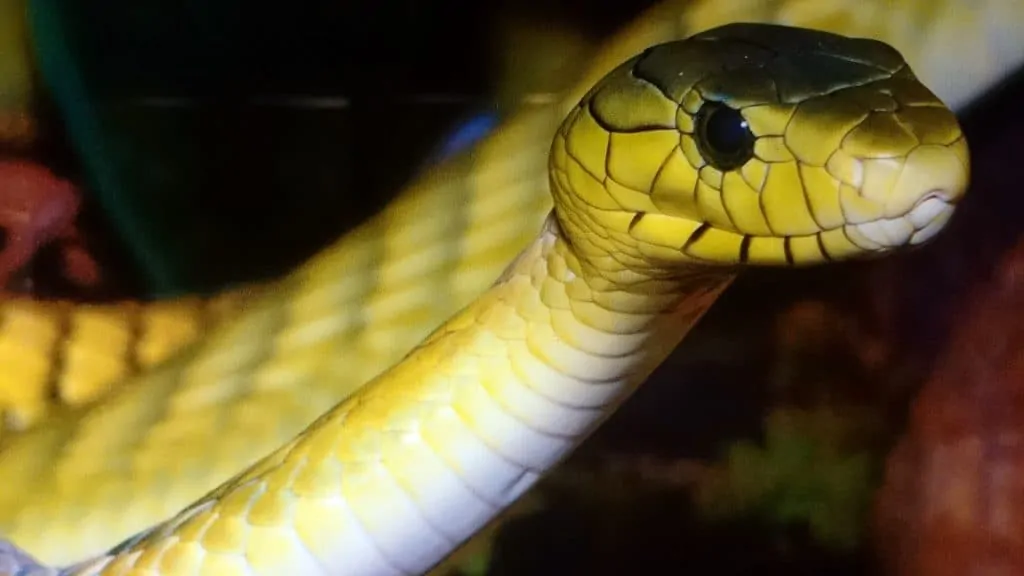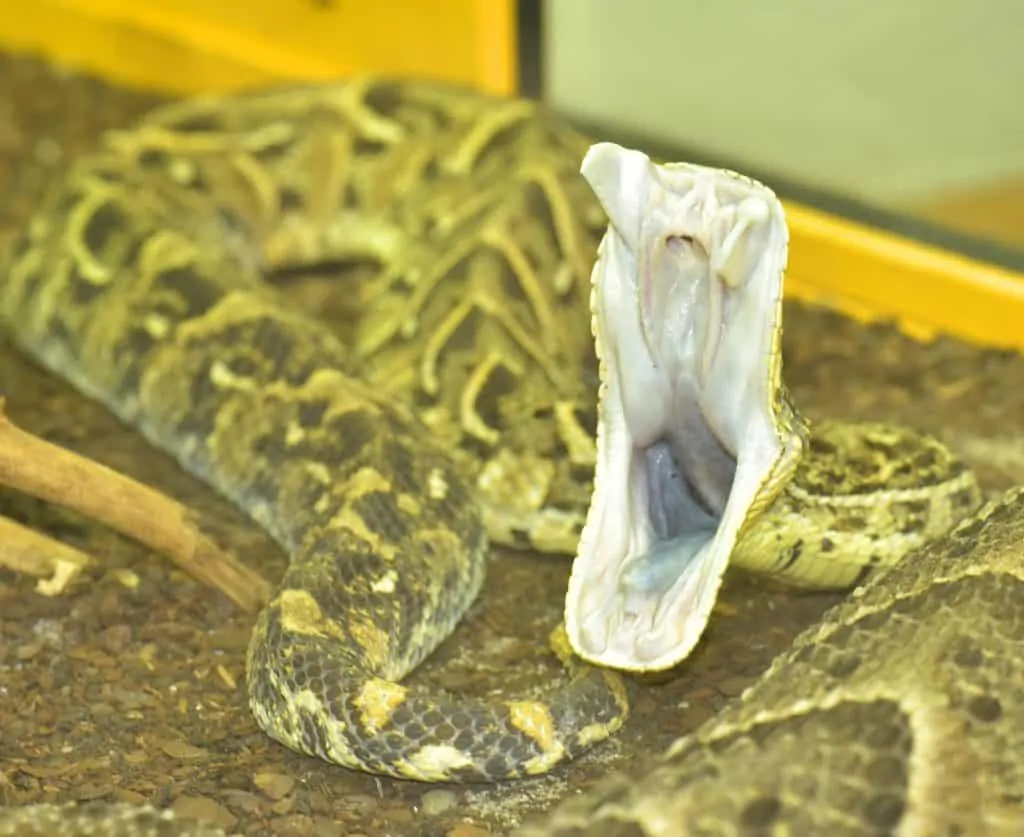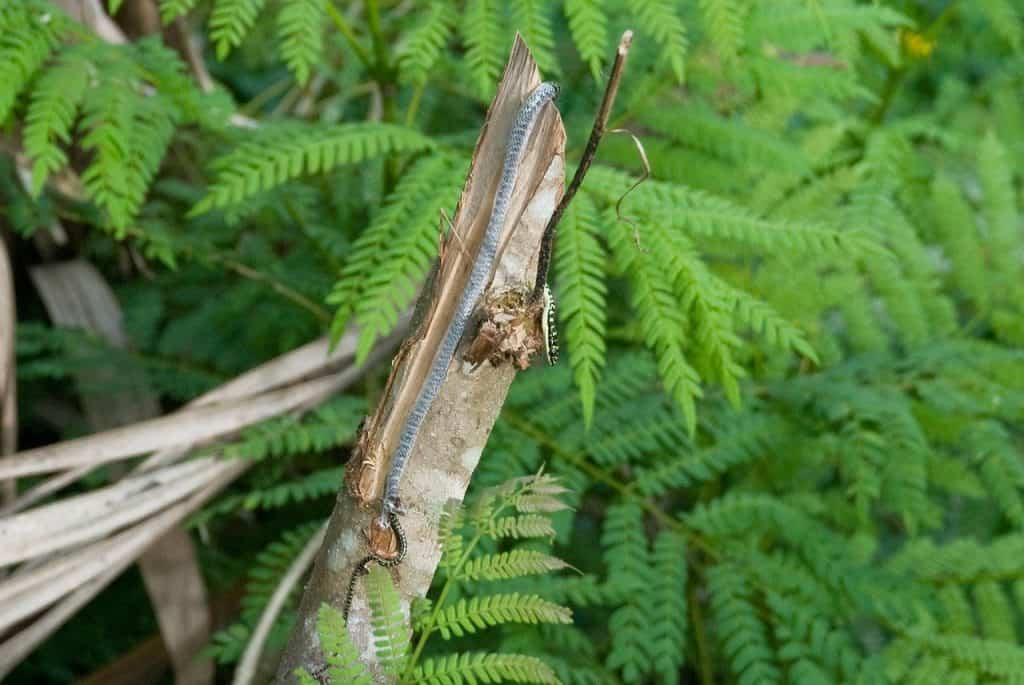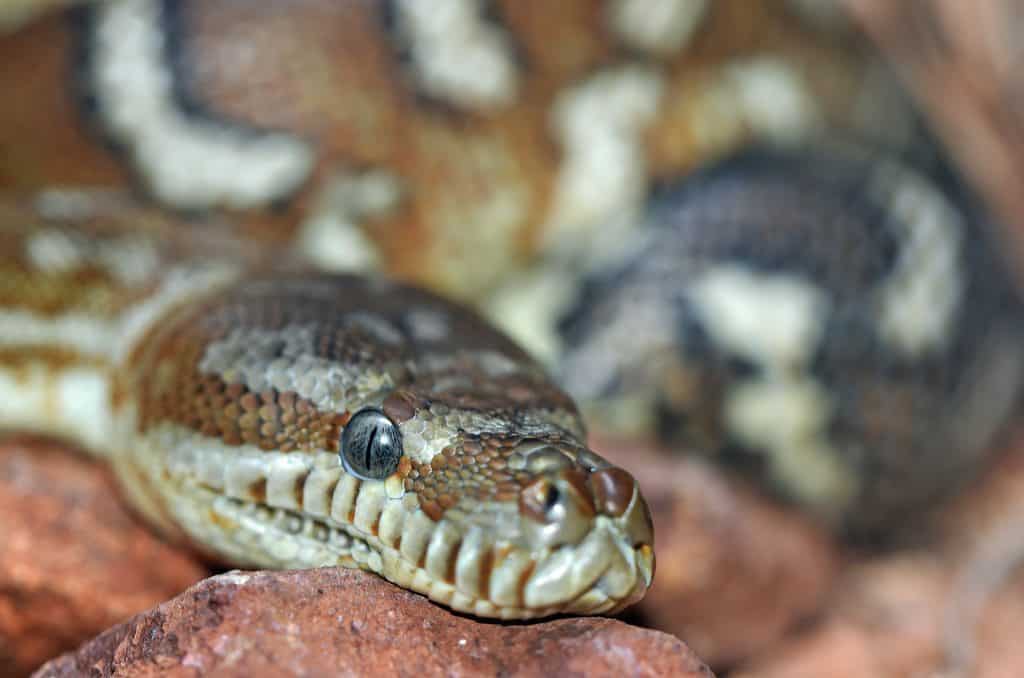
Snakes have a reputation for being one of the deadliest creatures in nature. However, there are a lot of things we don’t know about these cunning creatures. Get to know the unique traits of this reptile with these snake facts.
- Snakes come in 3,600 different species.
- Only 6 countries in the world don’t have snakes.
- Snakes first appeared 98 million years ago.
- Captive snakes can live up to 170 years, while wild snakes can reach 100 years.
- 725 snake species are venomous.
- Longer, larger snakes have longer lifespans.
- Scientists believe that snakes evolved from burrowing or aquatic lizards.
- Snakes used to have legs for 70 million years.
- The term snake comes from the Proto-Indo-European word *(s)nēg-o- which means “to crawl” or “to creep.”
- Some snakes navigate through infrared sensors on their snouts, which allow them to see heat.
- Brightly-colored snakes are usually venomous, although some harmless species mimic them as defense.
- Some snakes use their tail to lure prey.
- Snakes don’t have lymph nodes.
- Most snakes leave their eggs upon laying them.
- When a snake feeds, they unhinge their jaw to swallow prey whole.
- Antarctica is the only continent without snakes.
- The King Cobra is the longest venomous snake in the world.
- Snakes can digest everything but hair, claws, and feathers.
- The smallest known snake measures less than 3 inches long.
- Out of 725 venomous species, only 250 can kill a human.
Snake eyes can show whether it’s venomous or not.
Venomous snakes generally have slitted or elliptical pupils, while non-venomous snakes usually have round pupils. Definitely one of the snake facts to keep an eye out for. However, there are still certain exceptions. If you encounter a snake, it’s best to stay away.

Snake scales help them breathe underwater.
Snake scales serve different purposes for different species. For most snakes, the scales help them retain moisture in the body. In other cases, the scales help with grip and reduce friction, helping snakes navigate faster in different terrain.
A snake skeleton has 600-1800 bones, depending on the species.
Snakes all have 10 bones in the skull and jaw, but the ribs and vertebrae vary widely. For example, the 10 cm long thread snake has an average of 200 vertebrae and a pair of ribs each, amounting to 600 bones. Bigger and longer snakes have way more in comparison.
Only 70% of snakes lay eggs.
Though reptiles usually lay eggs, 30% of snakes actually give birth to live young. Live birth for snakes are either viviparous (no eggs) or ovoviviparous (the eggs are hatched inside the mother’s body), depending on the species.
Snakes can live up to 170 years.
Captive snakes can live as long as 170 years, but in the wild, they can survive to 100 years.
Pico jackfruit snake venom could possibly cure cancer.
The Pico jackfruit snake or bushmaster is native to South America. Its potent venom causes vomiting, diarrhea, blood pressure crash, blindness, and a closed-up throat. If left untreated, an adult can die in minutes. However, scientists are exploring this venom as a cure for cancer. Through experimentation, scientists are trying to engineer the venom to target cancer cells.
Albino snakes are sensitive to UV rays.
Since albino snakes don’t have as much melanin in their skin, they are more vulnerable to the sun’s light.
Denim is effective protection against snake venom.
You can talk smack all you want about jorts, but they just might save your life if you get bitten by a snake. According to a California study, snakes injected 60%-66% less venom on denim-covered gloves compared to bare gloves.
Snake teeth are always curved backwards.
Unlike humans, snakes don’t chew with their teeth. Instead, their teeth are used to keep prey from escaping the snake’s mouth – hence the curved shape.

Snake venom is deadly saliva.
Snake venom contains toxins that help immobilize, digest, and defend against prey or threats. Once expelled, it targets different bodily functions, such as sight, breathing, or red blood cell production. Snake venom is typically composed of 20 different compounds of proteins and polypeptides.
Dreams about snakes have both negative and positive meanings.
Snakes in dreams can symbolize many things, such as fear, hidden threats, subconscious, and sexual temptation. However, your dream about snakes could also represent healing, transformation, and creativity. How’s that for snake facts?
Snake poop looks like bird droppings.
Snake droppings appear tubular and cord-like, which is similar to some birds’ waste.
There are no snakes in New Zealand.
Since the beginning of time, New Zealand’s geological climate underwent several periods of glaciation, which made it too cold for snakes. Similarly, you wouldn’t find any snakes in Iceland, Greenland, Newfoundland, Ireland, and Antarctica.
Snakes shed 3-6 times a year.
Snake skin doesn’t stretch like human skin, so they have to molt or shed as they grow. On average, snakes shed their skins 3-6 times a year in a process called ecdysis. Prior to shedding, a new layer of skin grows underneath the old one. A snake will rub its head against rough objects to trigger the shedding process, which also rids their bodies of parasites.
There is an island in Brazil that only has snakes.
The Ilha da Queimada Grande sits between Brazil and the Atlantic Ocean. More commonly known as Snake Island, it houses a snake population of 5 snakes per square meter. Whether or not that’s something you want to witness yourself, the place is off-limits to tourists since the last golden lanceheads thrive on the island.
Snakes only eat 6-30 meals a year.
Snakes are opportunistic hunters, but they can slow their metabolism by 70% when food is scarce. In total, snakes only need 6–30 meals a year to stay healthy and keep growing.
Scaleless snakes are popular pets.
The first scaleless snake was found in 1942. Discovered in the wild, the western garter snake was the first to start the trend of domesticating these creatures. Many seek scaleless snakes for their striking colors due to the absence of scales. Surprisingly, they still function the same as their scaled counterparts.
Flying snakes exist.
The flying snake is a species native to Southeast Asia distinctly named for its ability to glide through forests. The Chrysopelea climbs trees through special scales on its belly, where it launches itself off from once it reaches the top. It then curves its body and stays in motion to keep itself in the air and land safely. Flying snakes can reach distances of 100 m with minimal effort compared to traveling on the ground.

1 in 3 adults have a snake phobia.
One of the most common phobias is the fear of snakes. About 1/3 of all adults have ophiophobia or herpetophobia – even Matt Damon has it. The phobia likely stems from an evolutionary fear of snakes.
The Titanoboa is the largest snake fossil ever found.
One of the scarier snake facts: Located in the Cerrejo mines of Colombia, the Titanoboa was the biggest snake fossil ever found. The 60 million-year old fossil measured up to 50 ft long, weighed 20 times the average person, and consumed a diet of crocodiles and giant tortoises.
Inland taipan snakes can kill 100 men in one bite.
The average inland taipan delivers 44 mg-110 mg of venom in a bite. This Australian species holds the record for the most venomous snake. A dose of the inland taipan’s venom can kill 250,000 mice.
The black mamba is the world’s fastest snake.
The black mamba is recognized as one of the deadliest snakes in the world. In a snap, the black mamba can move 4.32 to 5.4 metres per second, which is the fastest for any snake. Its venom is highly potent. Although the development of an antivenom has lowered casualties, the black mamba still kills around 20,000 per year in Africa.
The death adder strikes the fastest out of any snake.
Another snake native to Australia, the death adder can strike, inject venom, and be ready to strike again in just 0.15 seconds. Definitely one of the snake facts you wouldn’t want to see for yourself.
Snakes can explode after eating too much.
Although a snake’s jaws and body can stretch multiple times its own size, it also has its limits. In Florida, a 13-foot python was found with a 6-foot alligator protruding from its body. The python’s head was missing, while the alligator’s tail and hind leg stuck out from its body. Definitely one of the more disturbing snake facts.
Snakes drink with their throats.
To drink water, snakes dunk their snouts underwater pump water into their stomachs using their throats.
Snakes use their tongues to navigate.
When snakes stick their tongue out, it’s not just an intimidation tactic. Most snakes have poor eyesight and hearing, so they have to rely on their tongues to navigate and locate prey. Their forked tongues pick up pheromones in the surroundings, routing the signals to the Jacobson’s Organ and giving them a sense of direction.
A snake’s fangs only last about 6–10 weeks.
Much like sharks, a snake wears through its teeth with prolonged use. Once their fangs fall off, new ones quickly grow in its place.
Australia carries the most species of venomous snakes in the world.
Out of the 23 deadly snake species, 21 are found in Australia. How’s that for snake facts?
Snakes can eat things 75-100% bigger than their own size.
One of the scarier snake facts: A snake’s jaws are not fixed to their skull. Instead, they are connected loosely to the skull by ligaments. This loose connection lets snakes open their mouths around 150° to swallow their prey whole.

The more a snake eats, the more offspring it can bear.
The amount of food a snake eats determines the amount of offspring it will have. For example, the Arafura file snake eats the least and lays only one egg every decade.
A snake’s body will fail if temperatures reach below 10°C.
Snakes are cold blooded – so they can’t generate their own body heat. They usually bask on rocks to keep warm. Once temperatures drop below 10°C, a snake will become immobilized and could potentially die if not taken to a warmer environment.
Some snakes can retract their fangs.
Non-venomous snakes such as pythons can fold their fangs back into the roof of their mouth when not in use.
A stressed snake may eat itself.
Too much heat can also be bad for snakes. Heat can trigger a snake’s hunger instinct, and without prey around, it can start eating itself. Since snakes also have an instinct to keep prey in, an overheating snake won’t be able to stop once it starts biting and could eventually succumb to blood loss.
Snakes don’t stop growing.
However, a snake’s growth rate decreases with age. How’s that for cool snake facts?
The St. Lucia racer is the most endangered snake.
Currently, only 18 to 100 of these snakes are left in the West Indies.
Half of all snake casualties are from India.
Snakes reportedly kill over 40,000 people per year. However, unrecorded cases would probably amount to 100,000 deaths. Around half of these casualties have been from India.
Snakes are immune to their own venom.
Snakes have evolved to be immune to their own species’ venom, since bites regularly happen during mating and socialization. However, they would not be immune to another snake species’ venom.
Anacondas mate in a massive ball.
It’s common knowledge that animal sex can get pretty weird, but the anaconda’s mating habits takes it to the extreme. Instead of the usual male and female, anaconda mating consists of 1 female and around 12 males in a “mating ball”. They stay for up to a month in the ball. How’s that for crazy snake facts?
Mad snake disease can make snakes tangle into each other.
Captive snakes were recently diagnosed with the fairly new Inclusion Body Disease (IBD) which makes domestic boas and pythons tangle their bodies to death. The virus was said to come from infected rodents.
The king cobra is believed to be one of the most intelligent snakes.
King cobras are the only snake species with a strong familial sense. Unlike most snake species who abandon their young, they are the only snakes that create nests and defend their young.

Sea snakes can dive over 300 feet deep into the ocean.
Sea snakes dive deep with their paddle-shaped tails and flattened bodies. Most sea snakes don’t bite unless provoked. However, some species can be aggressive, too. Despite their name, they are not fully aquatic and lack gills. Because of this, they must surface regularly to breathe.
In one state in India, snake shrines are a household necessity.
Snakes are revered in Hindu mythology. Worshipping nagas or half-human, half-serpent deities the devotees call themselves nagaraja. The southern state of Kerala is predominantly nagaraja, with households generally having their own snake shrines. The state also houses the Mannarasala Temple, which is one of the most historic snake shrines in the country.
Snakes don’t have external ears.
However, a snake can still hear through its skin, muscles, and bones carrying vibrations to its inner ears.
A hognose snake is known for its unique snout.
If you’re wondering what a cute snake would look like, a hognose snake could be a likely candidate. Hognose snakes are named for their upturned snouts that resemble pig snouts.
The garter snake is the most common snake.
Garter snakes are harmless and non-venomous and usually bought as pets, which has caused a decline in the population of the species.
Snake repellents usually come in pellets.
Snake repellent is also available in spray and solar panel form. For home remedies, moth balls and lemongrass also work to drive away snakes.
A headless snake can still bite.
One of the snake facts that can save your life: A severed snake head can still bite for an hour after being cut off. In fact, a decapitated snake’s bite is more fatal, since they cannot regulate the amount of venom they expel anymore. Snakes can do this because of their slower metabolism rate, which keeps their organs alive longer.
Snake Venom is the strongest beer in the world.
The strongest beer in the world by alcohol volume is Snake Venom by Brewmeister. It has an ABV of 67.5%, which is considerably higher than hard liquor such as gin or brandy which averages at 40% ABV.
Snakes sunbathe.
Snakes like to lounge on roads and rocks because these areas absorb the Sun’s heat. This way, they can move quicker since their body temperature is regulated.

The cottonmouth snake is the only venomous water snake found in North America.
The cottonmouth snake is named for its mouth’s distinct white coloration. With a diet composed mainly of fish, it is a good swimmer, and has even been seen swimming in the ocean.
The bull snake copies rattlesnakes.
Rattlesnakes are a venomous snake species known for its distinct warning stance where it shakes its tail. Some non venomous species adapted to mimic this behavior, such as the bull snakes. Bull snakes don’t have the special muscle on rattlesnakes’ tails, but it imitates the sound by thrashing its tail on dead leaves and hissing loudly.
The Mozambique spitting cobra has a 100% accuracy rate.
The Mozambique spitting cobra is another deadly species native to Africa. It is named for its ability to spit at victims over 8 ft away. The cobra can spit from any position, and has a 100% accuracy rate for targets within 2 ft. It usually aims for the eyes with its permanently blinding venom.
A pine snake spends most of its time underground.
The pine snake feeds on its prey by entering rodents’ burrows and pressing them against the walls. It also stays underground during winters and hot summers.
The Sonoran Coral snake farts when scared.
When you visualize a snake ready to attack, you’d definitely think of it hissing or baring its fangs, which is mostly true. However, the Sonoran Coral Snake is one exception. For a venomous species, it has a strange way of dealing with threats: the Sonoran coral snake will hide its head under its body, raise a tightly-curled tail, and force gas from its cloaca. Experts call this phenomenon cloacal popping. As you’d expect, the gas emits a foul smell to drive away enemies. How’s that for crazy snake facts?
Chicken snakes are real.
The Spilotes pullatus is 4 animals at once: across cultures, it is called the chicken snake, yellow rat snake, or serpiente tigre. This large, non venomous snake is native to Southern Mexico and the Central and South Americas.
Snakes can’t blink.
Snakes don’t have eyelids. Their eyes are protected by a transparent scale called brille. Don’t expect a snake to wink at you anytime soon.
Snake charmers make their flutes out of a vegetable.
If you grew up on classic cartoons, you’d probably remember that scene where a snake charmer makes a snake dance to their music. The flute-like instrument isn’t a woodwind or brass instrument – it’s actually made from a gourd.
Snake eggs don’t have the same texture as bird eggs.
Instead, snake eggs have a leathery material that stretches as the snakelet develops.

The black racer snake is a constrictor that doesn’t constrict.
Also known as the Eastern racer, this species is endemic to North and Central America. From the name itself, this species is a speedy bunch. However, despite being classified as constrictors, they don’t like to suffocate their prey. Instead, they’d pin an unsuspecting rodent, frog, lizard, or bird to the ground with a few coils and swallow it whole from there.
You could easily mistake a coral snake for a milk snake.
Non venomous milk snakes look very similar to the highly venomous coral snake. However, one way to tell them apart is by their patterns. Milk snakes’ scales show a red body surrounded by black bands, while in coral snakes, the red part is surrounded by yellow bands.
Pythons kill their prey by suffocating it.
Reaching lengths of 16-23 ft, pythons are some of the biggest and thickest snakes out there. They make up for the lack of venom by constricting their prey. An experiment showed that a reticulated python applied 6 pounds of pressure per square inch during constriction, which causes instant internal damage in most animals. Despite being some of the biggest snake species, ball pythons have also been a top choice for domestication.
Not all venomous snakes have hollow teeth.
There is a common myth that venomous snakes’ fangs function like syringes, “injecting” venom from a gland behind their eyes. However, only 1/7 of venomous snakes use this method, such as rattlesnakes. For other snakes, the venom flows from their mouth onto the puncture wound. Some snakes also have a groove in their fangs where the venom flows from, rather than a fully hollow fang.
Snakes hibernate at different times.
Depending on the region, some snakes hibernate during the cold periods. In the wild, snakes usually hibernate in caves, deep crevices, roots, and dead logs. However, some snakes such as boas and pythons don’t hibernate.
Some cultures believe snakes are immortal.
One of the cooler snake facts: Because snakes routinely shed their skin, some cultures regarded them as immortal beings. Snakes would also form circles and spirals with their bodies, which were symbols associated with immortality.
Snakes were also seen as guardians of the underworld.
In the wild, snakes often live in cracks and burrows underground, which is why some cultures associate them with the Underworld.
All snakes are cold-blooded.
Snakes are ectotherms – their bodies aren’t equipped to regulate their temperature like humans or other warm-blooded animals. Most of them hibernate in the winter because they literally can’t function during that time.
Two-headed snakes don’t survive long.
As one of the creatures with the highest instances of polycephaly, you’d think that more two-headed snakes would survive and spread in the wild. However, they don’t really last long since the two heads compete for food and tend to attack the other. Another one for disturbing yet sad snake facts.
All snakes are carnivorous.
You can’t make a snake commit to a plant-based diet. Even the “harmless” snakes feed on smaller animals, since they need all the protein they can get.
Vietnam has a wine made of cobra blood.
Cobra blood wine is exactly what it sounds like. If you order this Vietnamese drink, the bartender will take a live cobra, slice its belly, and drain the blood into a glass of rice wine. The alcohol denatures the venom, which makes the wine completely safe to drink. Some Chinese variants also feature a whole snake steeped in wine, or wine made with a snake’s gallbladder or still-beating heart.

A snake can throw up in distress.
If a snake is attacked or stressed out after a recent meal, it can regurgitate its food to escape faster or drive away assailants. Definitely one of the grossest snake facts.
Some snakes can reproduce asexually.
Most pit vipers can reproduce asexually through Parthenogenesis. Through this method, an egg can develop into an embryo without fertilization. Animals such as fish, amphibians, and some insects also practice Parthenogenesis.
A man once bit a cobra that bit him and had no symptoms.
In 2012, Mohammed Salmodin got bitten by a cobra. In response, the Nepalese farmer bit the cobra back. Eventually, the cobra died and Salmodin suffered no symptoms. Yet another one for crazy snake facts.
The black mamba used to have a 100% fatality rate.
Two drops of black mamba venom can kill a person in 20 minutes if left untreated. Before the antivenom was developed, a black mamba bite was a death sentence, killing 100% of its victims. However, the antivenom now prevents 80% of casualties.
A python got loose at Google HQ on April 1.
On April Fool’s Day 2007, Google sent an email to its employees about a python in the office. The workers initially assumed it was a bad April Fool’s joke, but one of the employees actually lost sight of their pet ball python Kaiser who got loose in the Google HQ at Chelsea. However, the owner eventually found Kaiser with no incidents.
A rattlesnake’s tail muscles are one of the fastest muscles of any animal.
When a rattlesnake engages its tail, the muscle fires an average of 50 times per second, and can keep firing continuously for 3 hours.
Newborn snakes have as much venom as an adult snake.
Since most snakes abandon their young, newborn snakes are born ready to hunt. According to studies, snakelet venom is as potent as a full-grown adult’s venom.
Snakes can survive 2 years without food by digesting its organs.
Since snakes can slow their metabolism by 70%, they can go for long periods of time without food. However, they will become less active as time goes by. One study found that snakes survive without food by digesting their own organs – including their heart! Their slower metabolism allows them to survive losing heart muscle and mass in other organs. Definitely one of the trippiest snake facts.
Samuel L. Jackson accepted the role in Snakes on a Plane for the title.
The actor reportedly threatened to leave the production once a title change was suggested.
Some animals developed an immunity to snake venom.
The hedgehog (Erinaceidae), mongoose (Herpestidae), honey badger (Mellivora capensis), opossum, the secretarybird (Sagittarius serpentarius), are only a few species that developed an immunity to doses of snake venom.
Don’t wash a snake bite wound.
There are many misconceptions about how to deal with a snake attack. However, when treating a snake wound, one must never wash the wound off with water. Rinsing a snake bite with water will remove the remnants of venom on the wound, which makes it harder for emergency respondents to identify which snake bit you. This will delay the process since they won’t know which treatment to administer.

Was this page helpful?
Our commitment to delivering trustworthy and engaging content is at the heart of what we do. Each fact on our site is contributed by real users like you, bringing a wealth of diverse insights and information. To ensure the highest standards of accuracy and reliability, our dedicated editors meticulously review each submission. This process guarantees that the facts we share are not only fascinating but also credible. Trust in our commitment to quality and authenticity as you explore and learn with us.


